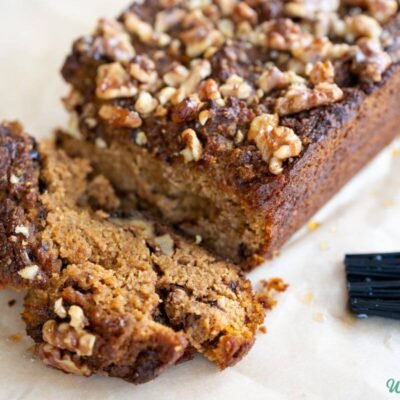
At some point in the past week (or five minutes ago after a Google search), you’ve made a resolution to change your life.
Maybe you decided to exercise every day. Perhaps it’s time to start eating better.
Or maybe you decided to stop wearing jorts.

Well my friend, I’m excited for you, and I want you to know you’ve arrived at the right place!
We help folks build healthy habits as part of our 1-on-1 Online Coaching Program, so you’ve come to the right place to fulfill your resolution.
Here’s what we’ll cover in our Guide to Build Healthy Habits in 2024:
Let’s get right to it so you can start rocking 2022!
Why Do We Suck At Building Healthy Habits?

“I know what I’m supposed to do, I just can’t get myself to do it!”
Welcome to the club – we all know what we need to do, but we just can’t get ourselves to make the important changes.
We know how to get in shape: move more and eat less!
We know how to exercise: get your heart rate up, do some push-ups, get stronger.
We know how to eat healthy: more vegetables and less sugar.
And yet, we can’t get ourselves to stick with ANY of these things for longer than a few weeks.
Why?
Simple: Building new healthy habits is tough, our lizard brains crave instant gratification, we don’t fully understand how habits are built, life gets busy, and our default behavior is often as unhealthy as it is easy.
As a result, we don’t put the right systems in place in order to make changes stick.
We also rely wayyyyy too much on willpower and motivation.
We tend to bite off more than we can chew, go too fast too soon, and then get overwhelmed too quickly.

Does this sound familiar?
- I’m going to eat 100% Paleo/Keto AND
- I’m going to run 5 miles a day AND
- I’m going to work out in a gym five times a week.
If you’re somebody that eats a typically poor diet, never runs, and hasn’t set foot in a gym since grade-school dodgeball with Mr. Wazowski, changing alllll of these at once is almost a surefire way to succeed at precisely NONE of them.
We’re conditioned these days to expect and receive instant gratification. If we want food we can get it from a drive-through, stick a frozen meal in a microwave, or sit down at a restaurant that’s open 24 hours. If we want a game we can download it to our computers/phones/PS5s within a matter of seconds. If we want to watch a TV show, it’s a few clicks away.
Hell, Netflix even starts the next episode for you without any action required!
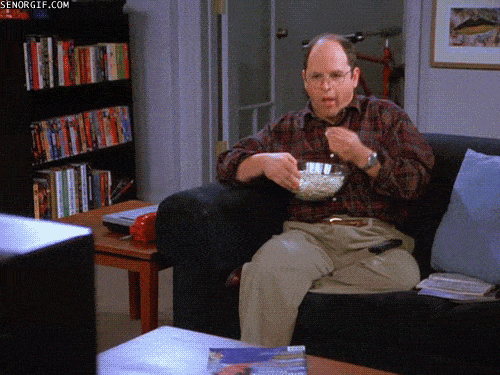
We expect getting in shape to go the same way.
And this is why we suck at building healthy habits that stick.
We tell ourselves “Hey, I’ve been dedicated for a whole two weeks, why don’t I look like Ryan Reynolds yet?”, not remembering that it took us decades of unhealthy living to get where we are, which means it’s going to take more than a few weeks to reverse the trend.
And then we miss a workout because life was busy or our kid got sick. And we get disheartened that exercise or giving up candy is not nearly as fun as Netflix and video games and Peanut M&M’s.
This is where everybody gives up:
- They try to change too many habits too soon
- They get impatient the results don’t come more quickly
- They slip up when life gets busy
- And they go back to square one
It’s why we are doomed to stay overweight and suck at building habits. It’s the videogame equivalent of attacking too many bad guys at once, which always leads to game over.
We’ll cover the specific healthy habits and resolutions you SHOULD be picking later in this article, but I have a big damn question to ask you first:
“But why though?”
The First Step of Building Healthy Habits (Know Your “Big Why”)

Before we do ANYTHING with actually building habits, it can help to have a good reason as to why you want to build them in the first place or the changes will never stick.
This whole “change who I am” stuff can be really powerful for keeping us focused when life starts to get busy.
If you’re here because you decided you “should” get in shape, you’re going to fail the second life gets busy.
If you are dragging yourself to the gym because you think you “should” run on a treadmill five days a week even though you hate it, you’re screwed!
As you’re determining the habits or resolutions you’re trying to set, make the habit part of a bigger cause that’s worth the struggle.
You’re not just going to the gym, you’re building a new body that you’re not ashamed of so you can start dating again.
You’re not just learning to like vegetables, you’re getting fit so you can feel great while on vacation this summer.
You’re not just dragging yourself out of bed early, you’re getting up earlier so you can work on your side business before your kids get up so you can set money aside for their college education.
In our 1-on-1 Coaching Program, we refer to this as your “Big Why.”
Tie your journey to a greater cause and you’re more likely to push through the muck and mire to get it done.
So dig 3 levels deep and ask “why” until you get to the root cause of WHY you want to build a new healthy habit or change a bad one. Write it down. And hang it up somewhere you can see it every day.
Got your reason? Great.
Now let’s get into the science of habits.
How to Build Healthy Habits (The Three Parts)

As Charles Duhigg points out in The Power of Habit (a must-read for anybody interested in behavior change), there are three parts to a habit:
#1) Cue (what triggers the action): It can be a feeling: I’m tired, I’m hungry, I’m bored, I’m sad. Or it can be a time of day: it’s Monday at 9am, work is done, etc.
#2) Routine (the action itself): This can either be a negative action you want to cut back: I drink soda, I eat cake, I snack, I drink alcohol, I smoke cigarettes, I watch TV – or a positive one: I go to the gym, I go for a run, I do push-ups, I read a book.
#3) Reward (the positive result because of the action): I’m now awake. I am temporarily happy. My hands/mind are occupied. I can forget the bad day I had. I feel energized. I feel good about myself.
Depending on your routine/action above, habits can either be empowering and amazing, or part of a negative downward spiral. Your body isn’t smart enough to KNOW what it needs to do: it just wants to fix the pain or chase the pleasure of the cue, and whichever way you choose to respond will become the habit when it’s done enough times.
Factor in genius marketing, behavioral psychology, and an environment set up for us to fail – and bad habits rule us.

It’s why we crave certain foods, why we can’t help but check our phone every time it vibrates, and why we can’t keep ourselves from watching one more episode or grinding one more level in World of Warcraft.
Duhigg lays things out very clearly:
“There is nothing programmed into our brains that makes us see a box of doughnuts and automatically want a sugary treat.
But once our brain learns that a doughnut box contains yummy sugar and other carbohydrates, it will start anticipating the sugar high. Our brains will push us toward the box. Then, if we don’t eat the doughnut, we’ll feel disappointed.”

Picture this:
- We have trained your brain to take a cue (you see a doughnut), anticipate a reward (a sugar high), and make the behavior automatic (nom nom that donut).
- Compare that to a cue (you see your running shoes), anticipate a reward (a runner’s high), and make the behavior automatic (go for a run!).
The Dark Knight himself said it best: “It’s not who I am underneath, but what I do that defines me.”
Let’s take a look at each part of the habit-building process and start to hack the sh** out of it!
Learn Your Cues: Recognize the triggers.

Whether you are trying to change an old habit, stop an unhealthy habit, or begin a healthy habit, it starts with the first step in the process:
“The Cue.”
If you want to stop drinking soda, but feel like you need it every afternoon to get through work, your brain has been wired to think SODA after the cue:
- Cue: I’m tired, thirsty, and have no energy.
- Routine: I drink a soda around 3pm.
- Reward: Weeeeee caffeine! Sugar! Happy! My life has meaning!
When identifying bad habits to avoid, it starts by becoming aware of the cue that sets the habit in motion. Simply being aware of the cue is a great start to breaking the cycle:
- When I get bored (cue), I eat snacks (routine), and it fills the void with a happy stomach (reward).
- When I come home from work (cue), I plop down on the couch and play video games (routine), and it helps me forget about work (reward).
- When I get nervous (cue), I start to bite my nails (routine), to take my mind off the awkwardness (reward).
So if you are looking to break a bad habit, it begins by identifying what the cues are that make you take the action that you’re trying to stop.
At the same time, you can mentally train yourself, just like Pavlov’s dog, to build a new healthy habit by identifying the habit you want to build and the cue you want to use to proceed it:
- When I wake up (cue), I will go for a walk (routine), and reward myself with an audiobook on the walk (reward).
- When I get tired (cue), I will drink black coffee instead of soda (routine), and along with the caffeine boost. (reward), I’ll get new running shoes after 30 soda-free days (reward), and satisfaction from the weight loss thanks to fewer calories (reward).
- When I come home from work (cue), I will walk straight to my computer to work on my novel for 30 minutes (routine), and reward myself with Netflix after I have written 500 words (reward).
So, whether you’re breaking a bad habit or starting a new one, it begins by recognizing the cue that triggers the habit.
Once you recognize or pick the cue, you can start working on fixing the routine (action).
The Key to Sustainable Healthy Habits: Use Systems
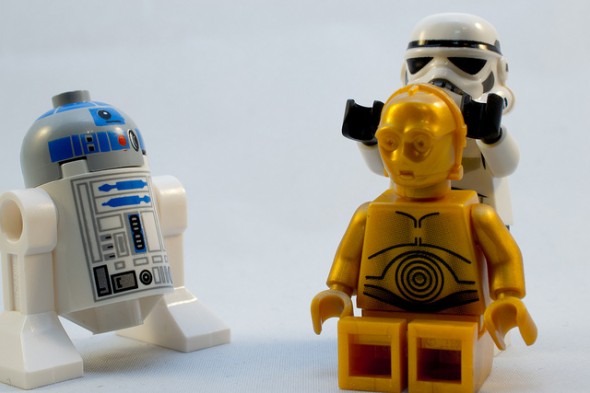
“Steve, I get it, but I still struggle with the ‘building the routine’ part…for some reason I just can’t bring myself to do it.”
Yup – welcome to the toughest part of a habit:
The Routine (the action itself!).
This is where we’re going to start thinking and acting like nerds and scientists.
Whether we’re trying to stop a negative routine (stop drinking soda) or start doing a healthy routine (start running), both need to be addressed with a different plan of attack.
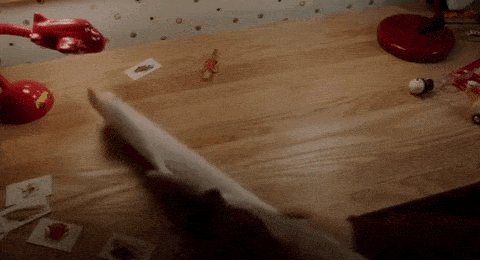
For starters, we’re going to stop relying on two things:
- Willpower: if you have to get yourself to exercise, you’ll give up when you get too busy or it’s too cold.
- Motivation: if you need to be motivated, you’re going to give up and then beat yourself up for not being more motivated!
Both motivation and willpower are finite and fickle resources that will abandon you when you need them most. Most people hope and pray that they have enough motivation and willpower to build a habit.
Not us though!
We’re going to remove both from the equation and use systems and outside forces to make the routine even easier to build (or tougher to build if it’s a bad habit you’re trying to swap!).
This can be done in a few ways:
- Environmental hacks: making the routine easier by removing steps needed to complete it, or adding steps between you and a bad habit.
- Programming hacks: add your habit to your daily calendar, track your progress daily with a journal, and make it part of your day.
We are products of our environment. We can use this information to our advantage and make the process of building a new habit or changing a bad habit easier by modifying our environment. I dig into this more fully in our article: “Build your Batcave for Habit Change,” but I’ll cover the basics here.
Look at the places you spend your time. Reduce the steps between you and a good habit, and increase the steps between you and a bad habit. You’ll be less reliant on willpower and motivation and more likely to do the healthy habit or skip the bad habit.
Here are five examples of environmental hacks you can use:
- RUN EVERY MORNING: Go to sleep with your running shoes at the foot of your bed, with your running uniform laid out already. Hell, you can sleep in your running/workout clothes. Put your alarm clock on the other side of the room so you HAVE to get out of bed to turn it off.
- GO TO THE GYM AFTER WORK: Pack your gym bag BEFORE going to sleep the night before. That way, every morning you already have a bag to throw in your car or bring with you. As soon as 5pm hits, you are in your car on your way to the gym. (Don’t want to head to the gym? Here’s how to build a gym in your home).
- EAT HEALTHIER: Don’t give yourself the option of not eating healthy – throw out the junk food in your house and start preparing meals the night before. Put a lock on your web browser from ordering pizza online (yes, you can do that now), and don’t drive down the street full of fast food places.
- WATCH LESS TV/PLAY FEWER GAMES: Use your laziness in your favor. Unplug the TV/system. Increase the steps between you and watching the TV. Put parental controls on your own system and have your friend set the time limit and the password. I knew somebody who put his TV in his closet and cut his TV viewing by close to 100%. Don’t rely on willpower – make it more difficult!
- CHECK YOUR PHONE LESS: Turn off your notifications and uninstall the apps that waste your time. Put your phone in Do Not Disturb mode when you are at work, and put it in your desk drawer. Don’t rely on willpower to get yourself to not check your phone when it buzzes – get rid of the buzz.
You can also use programming hacks to help build NEW healthy habits:
- EXERCISE: If you want to exercise more, set calendar alerts at the beginning of your week so that every day at 8AM you receive a cue (ding! on your phone) and a reminder to do the activity. You’re much more likely to stay on target when the activity has been scheduled ahead of time.
- HEALTHY EATING: Consider batch cooking! If cooking healthy meals every night sounds like way too much work (I hear you on that), consider doing it all on ONE day – it’s a significant time-saver, and it also will reduce the steps between you and healthy eating because the meal is already cooked and in the fridge!
- WRITING: If you want to write a book, tell yourself you have to write 500 crappy words every day. This is how I wrote Level Up Your Life. Buy a calendar, and draw a big red X on every day you complete your task. Make your singular focus every day continuing the streak[1].
Make the Reward Momentum-Building
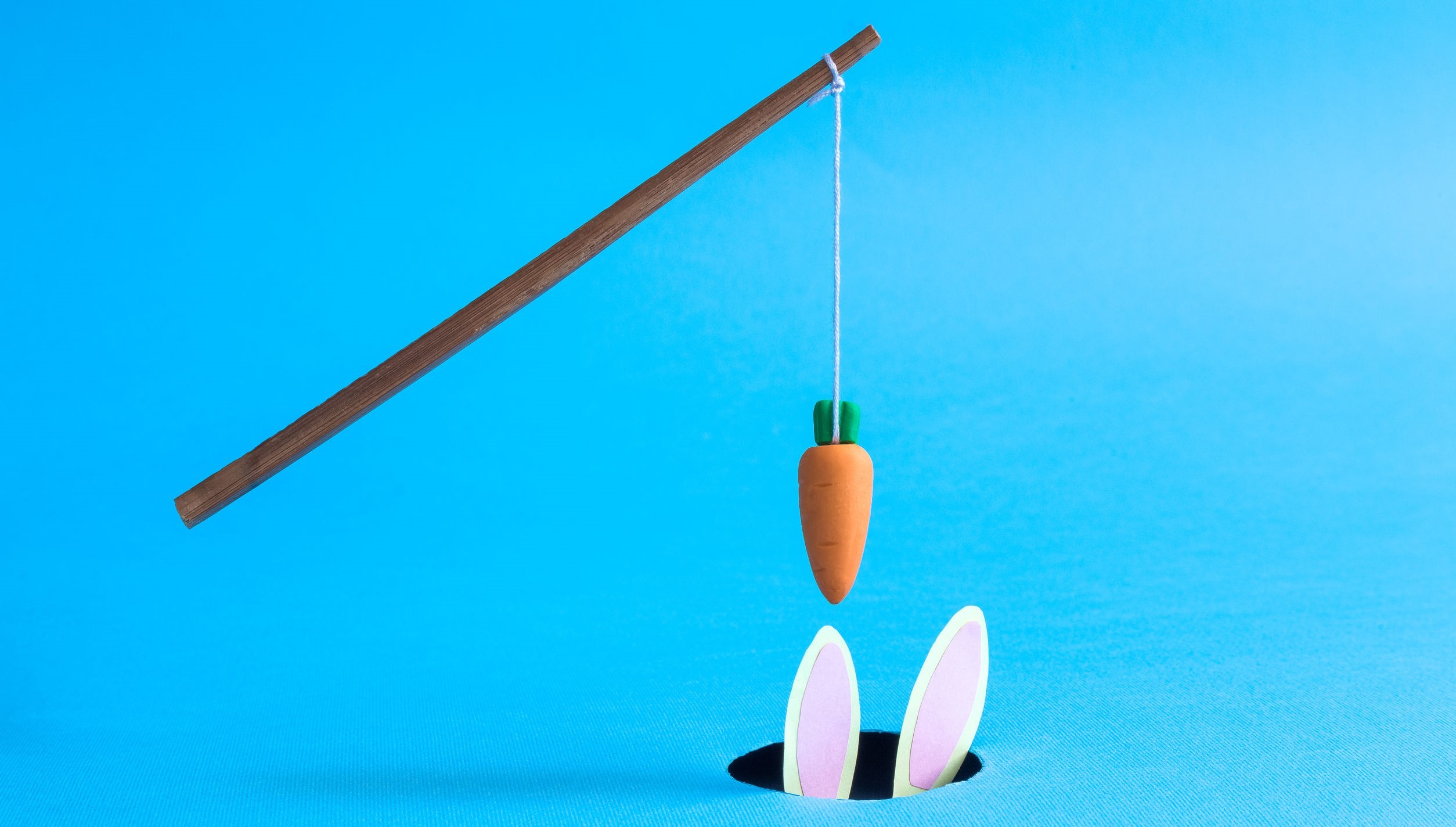
And we are finally at the third part of the habit:
“The Reward.”
When looking to replace bad habits, do some reward analysis on your bad habits:
Soda gives you a caffeine kick and a burst of energy in the afternoon when you’re tired.
Can you replicate that energy boost for your body in a healthier way? Perhaps you can switch to black coffee and go for an afternoon walk.
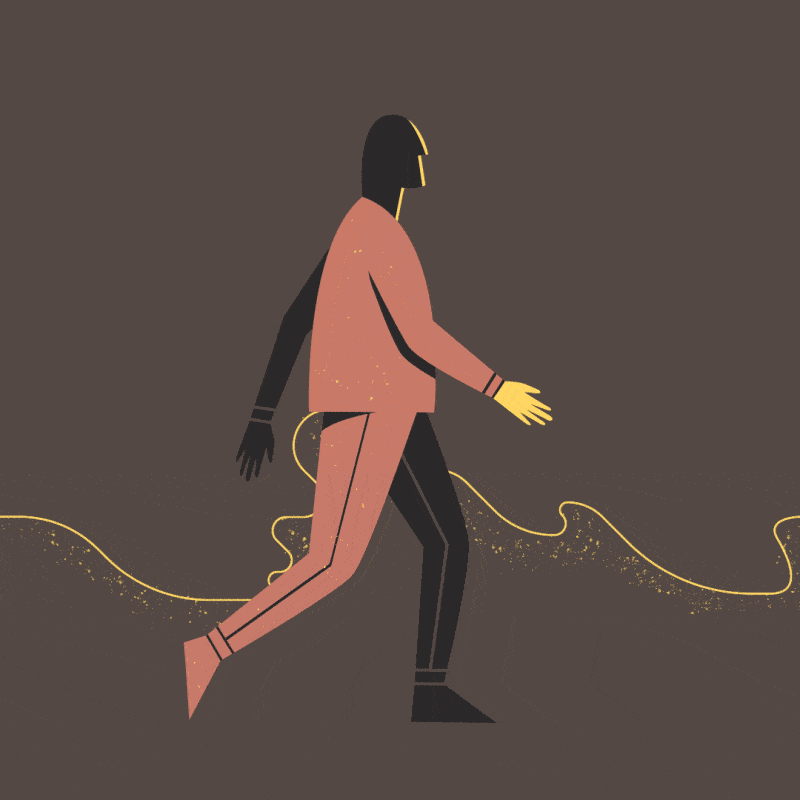
Here’s another example:
You find you spend too much time watching TV because you love escaping into worlds, and it’s affecting your health.
Can you listen to your favorite audiobook only when you walk?
(This is called temptation bundling).
This step will require some analysis, by digging into the reward you’re trying to recreate, without the negative action. This can lead your brain to some tough places, but it’s healthy to dig into it.
For example, if you want to start drinking less (or give up completely), you might discover that the reward you’re chasing is actually “escape from a job I hate” and “avoiding social anxiety.”

Dig into your reward and what your brain is craving, and then see if you can reverse engineer a healthier routine with the same reward.
And then use outright bribery to get yourself to actually do the new healthier and choose the better action/routine.
What works for science and physics also holds true to building habits: inertia and momentum will work against you when it comes to building habits…until it starts to work for you as the habit becomes automatic.
We can fix the third part of the habit-building loop, the reward, with momentum-building prizes or results to bribe ourselves to continue. With each healthy and positive reward, with each completed routine, we make the habit sliiiiightly more likely to become more automatic the next time.
In other words, create rewards that reward you back!
DON’T reward your routine (running!) with an unhealthy reward (cake!). That’s “one step forward, two steps back.” And nutrition is 90% of the equation when it comes to weight loss anyway!
DO reward your routine (running for 5 minutes every day for 30 days straight) with a reward that makes you want to keep running (a snazzy new pair of running shoes).
Our new app, Nerd Fitness Journey, specifically follows this “cue, routine, and reward” format to help build new habits. In the app, we “reward” you with cool loot and XP, so you can level up (literally) while you getting lean and strong.
If you’re interested, you can try it for free right here:
5 Hacks for Effortless Healthy Habit building

Your life will get busy.
There will be days when you don’t want to do your new habit. Or you want to backslide and go back to old habits. Actually, that will pretty much be every day, especially early on.
So don’t leave it up to yourself!!!
Stop relying on yourself and start relying on outside forces. Here are the best tips you can use to get yourself to actually follow through with a habit:
1) RECRUIT ALLIES: find a friend or group of friends to build the habits with you. A recent study [2] showed that:
Among the weight loss patients recruited alone and given behavioral therapy, 24% maintained their weight loss in full from Months 4 to 10.
Among those recruited with friends and given therapy plus social support, 95% completed treatment and 66% maintained their weight loss in full.
You do not have to go on this habit-building journey alone. Building a guild or recruiting a group of people to support you and help you and make you better could be the difference-maker in building habits!
When your friend is already at the gym waiting for you, you HAVE to go. If it was up to you, skipping out and watching Netflix has no negative consequences. Recruit friends and allies!
Don’t have that support group at home? Consider joining ours 🙂
Remember, those first few weeks are the toughest, which means they’ll require the most effort to get started.
2) CULTIVATE DISCIPLINE WITH ACCOUNTABILITY: When you can’t get yourself to follow through on a new healthy habit you’re desperately trying to build, make the pain of skipping the habit more severe than the satisfaction you get from skipping it.
Allow me to introduce some comical consequences:
- Every time I skip ______________ this month, I will pay $50 to my wife/husband/friend who will donate my money to a cause I HATE.
- Every time I decide not to _______________ this month, I have to run around my house naked.
- Every time I do ____________ when I shouldn’t, I will let my three-year-old do my makeup before work.
Do any of these results sound like fun? If you can’t afford to pay your friend $50, if running naked around your house might get you arrested, and if you’ll get fired looking like a drunk clown thanks to your kid’s makeup skills…maybe you just do what you know you need to do. The more painful it is to skip something, the more likely you’ll be to actually suck it up and do it.
3) NEVER MISS TWO IN A ROW. What happens if you miss a day? Who cares! One day won’t ruin you – but two days will, because 2 missed days can become a month or a year in the blink of an eye.
It’s something I bring up in this video over on our YouTube Channel:
As pointed out in a research summary:
“Missing the occasional opportunity to perform the behavior did not seriously impair the habit formation process: automaticity gains soon resumed after one missed performance.[3]
4) DON’T PICK HABITS YOU HATE: “Steve, I know I should run so I’m trying to build a running habit even though I hate running.” Stop.

Can you get the same results with a different habit, like rock climbing or hiking or swing dancing? Pick a habit that isn’t miserable and you’re more likely to follow through on it.
At the same time, we have tons of success stories of people who went from hating exercise to loving how it feels.
It’s because they made the habit part of a bigger picture: “I am working out because I am building a kickass body so I can start dating again!”
Or even if they don’t LOVE strength training, they love feeling strong and confident and powerful, so they build the habit and make it a priority.
It’s because they had a BIG enough why to overcome their initial dislike of exercise until they learned to love how exercise made them feel.
5) TRY TEMPTATION BUNDLING: Consider combining a habit you dislike with something you LOVE, and you’ll be more likely to build the habit.
If you hate cleaning your apartment, only allow yourself to listen to your favorite podcast when you are cleaning or doing the dishes.
Want to go to the gym more? Allow yourself an hour of watching Netflix, but ONLY while you’re on the elliptical.
This is called temptation bundling, and it can be a powerful change.
The Secret to Fulfilling Your Resolution (Do Less)
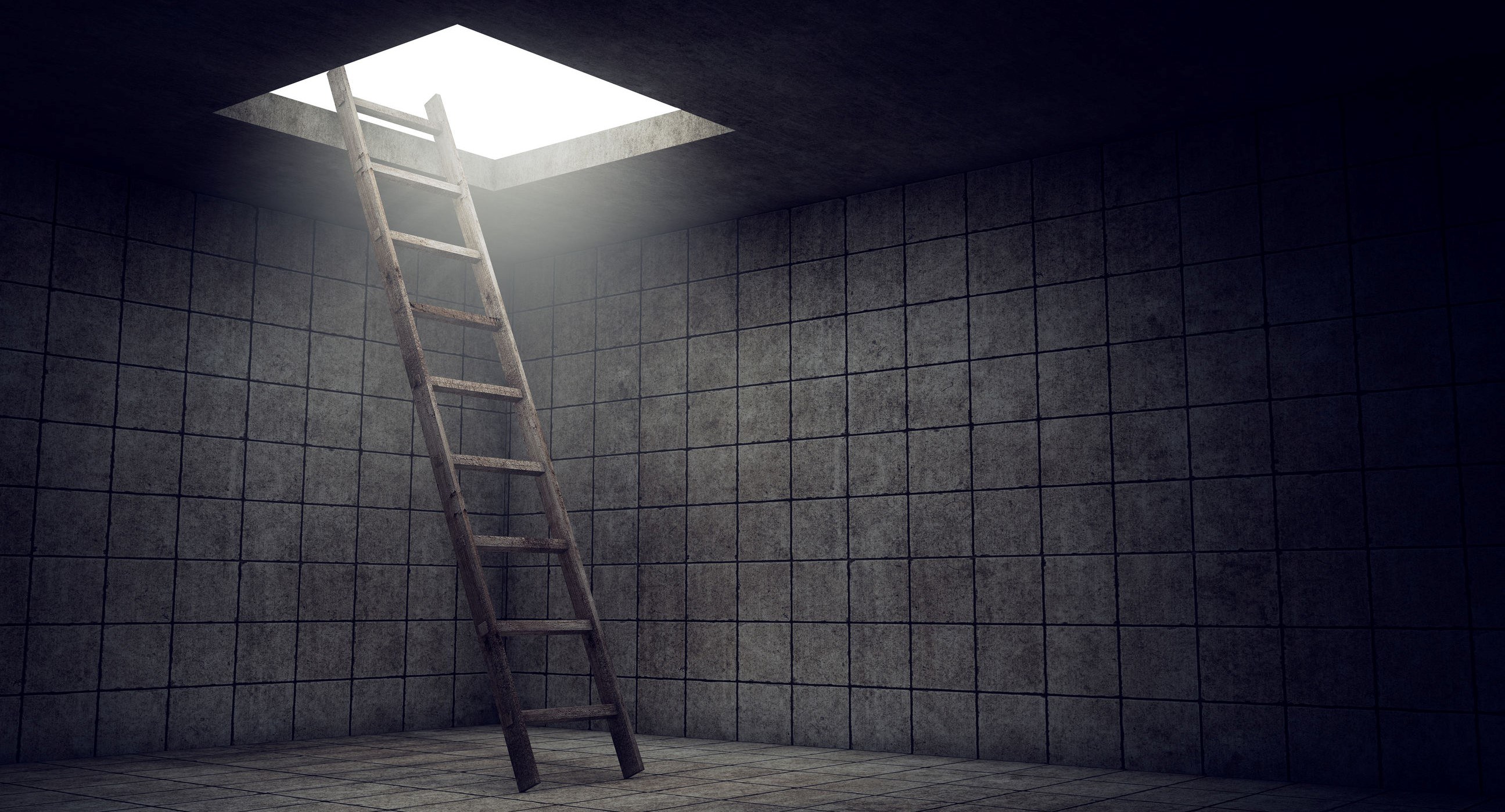
Now that you’re educated like a boss on the different parts of a habit, it’s time to build one!
I’ll leave you with a final bit of advice: if you decide that you want to run a marathon or save the world or lose hundreds of pounds, you’re going to screw up unless you internalize the following information:
DO WAY LESS.
Or in the immortal words of Kunu from Forgetting Sarah Marshall: “The less you do, the more you do”:
Pick ONE habit, make it small, and make it binary. Something that at the end of every day you can say “yes I did it” or “no I didn’t.”
Habits that are nebulous like “I am going to exercise more” or “I’m going to start eating better” are more useless than a Soulcycle membership for Jabba the Hutt.
Here are big examples. Be specific. Be small. And track it:
- Want to start exercising more? Awesome. For that first week, ONLY go for a walk for just 5 minutes every morning. Literally 5 minutes.
- Want to start cooking your own healthy meals? Just aim for one meal per day or one meal per week. Whatever works for you and your schedule.
- Want to stop drinking a 2 liter of Mountain Dew every day? Scale it back to 1.9 liters a day for a week. Then 1.8 for a week. Then 1.7…
- Want to get out of debt and build the habit of frugality? Start by saving an extra five bucks a day, or finding a way to earn an extra 5 bucks a day.
- Want to learn a new language? Speak your new language out loud for 10 minutes per day. That’s it!
Keep your goals SMALL and simple. The smaller and simpler they are, the more likely you are to keep them. And the habit itself pales in comparison to the momentum you build from actually creating a new habit.
I don’t care how many calories you burn in a 5-minute walk, just that you can prove to the new YOU that you can build the habit of walking, and only then can you up the difficulty.
We’re thinking in terms of years and decades here! So think small.
My real-life example: I wanted to build the habit of learning the violin at age 31, but couldn’t get myself to do it because I told myself I was too busy, which is a lie (“I only have 25 minutes; I need 30 minutes to practice…might as well not practice at all”), and thus I never played!
Once I lowered the threshold to “I have to only play for 5 minutes per day,” it gave me permission to pick it up here and there – and I ended up practicing WAY more frequently, and got better much faster.
I still suck, mind you, but I’m lightyears ahead of where I was before!
And please: DON’T BUILD ALL THE HABITS AT THE SAME TIME.
If you’re new to building habits, or you have never stuck with anything long enough to make it automatic, it’s because you did too much. Habits are compound interest.
As you build a new habit, it bleeds over to other parts of your life and makes future habits easier to build too – momentum!
As Mark Manson lays out in his guide on Habits:
“Willpower is like a muscle. It can be exercised and practiced and built up. It can also be forgotten, weakened and atrophied.
Just like going to the gym and building up strength and endurance, you can build up your discipline and willpower over a long period of time by setting and accomplishing a series of tasks on a consistent basis.”
You’ve probably tried the whole “build all the habits at once” and it doesn’t work. So try building ONE habit for 30 days. And then pick a habit that stacks on top of that one and helps you build more and more progress and more and more momentum.
Start today: Pick Your Habit and Go

I’ll leave you with a final quote from Duhigg’s The Power of Habit:
“If you believe you can change – if you make it a habit – the change becomes real. This is the real power of habit: the insight that your habits are what you chose them to be. Once that choice occurs – and becomes automatic – it’s not only real, it starts to seem inevitable, the thing…that bears us irresistibly toward our destiny, whatever the latter may be.”
You’ll need more brainpower initially, until your default behavior becomes the automatic habit-building you’re chasing.
With each day of you building your new habit, you’re overcoming any self-limiting belief, building momentum, and becoming a habit-building badass! And then those habits become automatic. Then, we rejoice:

So today, I want you to look at just ONE habit you want to change:
- Identify the cue that spurs it on – Is it the time of day? Boredom? Hunger? After work? Stress?
- Identify the potential rewards – Happiness? Energy? Satisfaction?
- Identify a new routine you’d like to establish that results in the same “reward” from the negative behavior…but in a more productive and healthy way.
Want more help?
I write the best newsletter in the galaxy – it’s two short emails a week, directly from my brain to your inbox, and I promise to make you laugh and live a bit better!
Want expert guidance on your healthy habit building in 2024? Sign up for a free call with our coaching team in the box below to learn more about the program and see if it’s the right fit:
I want you to leave a comment below: pick ONE habit that you’re going to build this month and identify the three portions of the habit you’re looking to build.
Good luck – now go build some momentum.
And ONE habit.
-Steve
###
photo source: Syahrir Maulana © 123RF.com, KHOTCHARAK SIRIWONG © 123RF.com, alphaspirit © 123RF.com, Evolution – Alternative, Nattapol Sritongcom © 123RF.com, obradov © 123RF.com, Chayapon Bootboonneam © 123RF.com, Boris Rabtsevich © 123RF.com, #13/366 Placing the head, Mixed Messages


